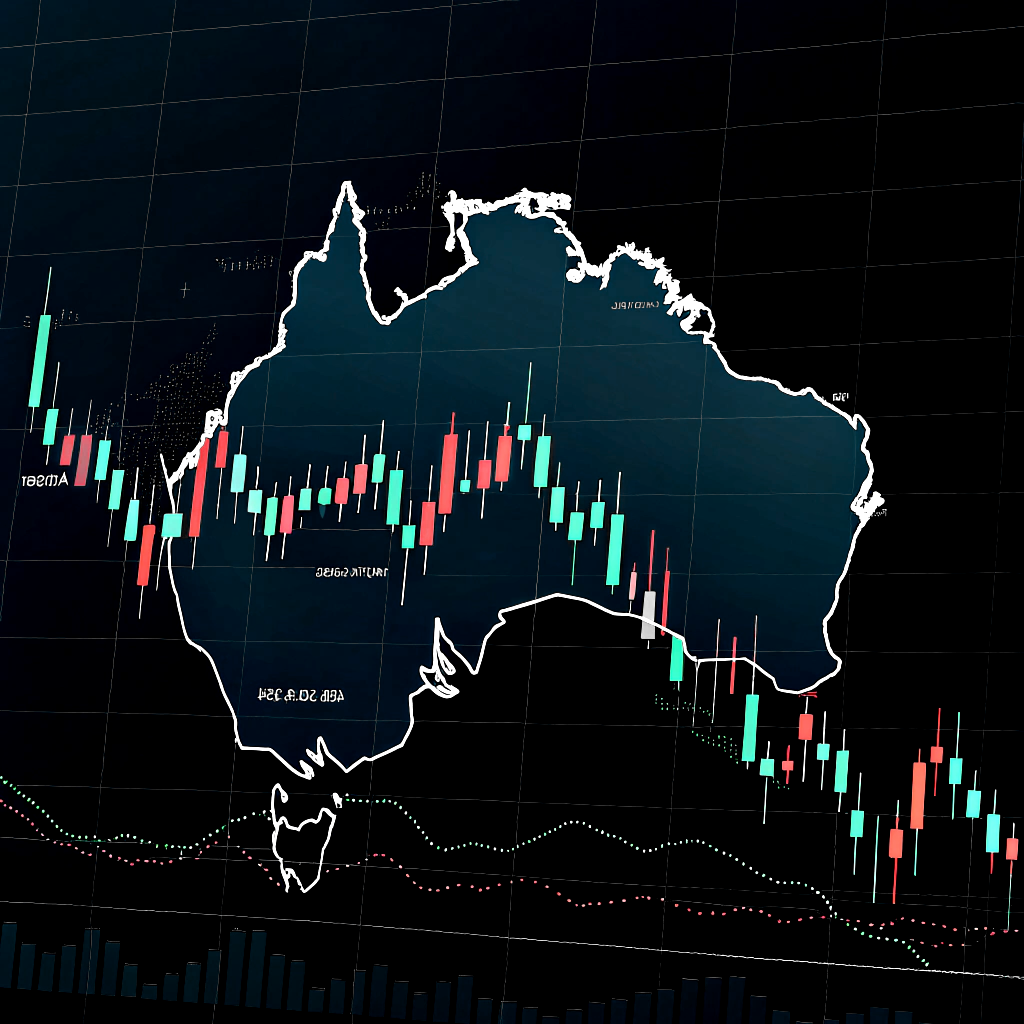Trade Australian Share CFDs: Investing Profitably in AU Markets

Trading Contracts for Difference (CFDs) on Australian shares offers investors a flexible way to gain exposure to the ASX without owning the underlying stock. This guide will walk you through the essentials — what share CFDs are, their key advantages, practical tactics for maximising returns, and step-by-step instructions to place your first trade in 2025.
Australian Share CFDs: What They Are and Why Trade Them
Australian share CFDs are derivative instruments that mirror the price movements of ASX-listed equities. Instead of purchasing the stock outright, you enter a contract with your broker to exchange the difference in the asset’s value from the moment the position is opened to when it’s closed.

Trading these contracts provides:
- Market access without ownership — you can speculate up or down without dealing with share certificates or settlement cycles.
- Leverage — control a larger position with a smaller deposit, amplifying gains (and losses).
- Cost efficiency — no stamp duty is payable on CFD trades in Australia, which can significantly reduce transaction costs.
For a deeper dive into CFD mechanics, see the Australian Securities Exchange’s official primer on derivatives.
Key Benefits & Features of Australian Share CFDs
The appeal of CFDs lies in features tailored to active traders and sophisticated investors. Below is a summary of what makes them an attractive vehicle in 2025:
| Feature | Benefit |
| Leverage & Capital Efficiency | Control larger positions with minimal margin requirements. |
| Low Spreads & Transparent Costs | Narrow bid-ask gaps and clear commission structures. |
| Flexible Lot Sizes | Trade micro-lots to scale your risk precisely. |
| Advanced Risk-Management Tools | Built-in stop-loss, take-profit, and guaranteed order options. |
| 24/5 Market Access & Deep Liquidity | Continuous trading from Sunday evening to Friday night. |
Leverage & Capital Efficiency
By posting a fraction (often 5–20%) of the full position value, you can amplify your exposure. For instance, a A$10,000 margin deposit might let you trade A$100,000 worth of BHP Group shares. Always remember that while leverage magnifies profits, it equally magnifies losses, so prudent sizing is critical.
Low Spreads & Transparent Costs
Leading brokers now offer raw-ECN pricing on ASX CFDs with spreads as tight as 0.5 points on the S&P/ASX 200 Index. Typical fee structures combine a small commission (e.g., A$0.07 per share) with transparent financing rates, enabling clear P&L forecasts.
Flexible Lot Sizes
Not every trader needs to commit to standard 1-lot contracts. Many platforms allow trading from 0.1 lots (10 shares worth), so you can customize your position size to suit your risk tolerance and account balance.
Advanced Risk-Management Tools
Modern trading terminals integrate one-click orders with guaranteed stop-losses (GSLs), limit orders, and trailing stops. GSLs — available through ASIC-regulated providers — help protect against extreme market gaps for a small fee.
24/5 Market Access & Deep Liquidity
ASX CFDs trade around the clock from Sunday 10 pm AEST to Friday 4 pm AEST, with peak liquidity during Sydney and London overlapping hours. This extended window lets you react to global events without waiting for the official ASX open.
How to Invest Profitably in AU Share CFDs
Consistency and discipline separate successful CFD investors from the rest. Below are six pillars to help you refine your approach:
Conduct Thorough ASX Market Research
Use fundamental analysis — evaluate earnings reports, dividend yields, and sector trends — and complement it with technical studies such as moving averages and RSI. Websites like the ASX Company Announcements portal provide real-time disclosures that can influence share prices.
Choose a Data-Driven Trading Strategy
Whether you prefer momentum trading, mean-reversion, or news-based setups, back-test your system on historical ASX data. Tools like TradingView charts (see their Australian markets section) offer scripting environments to simulate past performance and optimise entry/exit rules.
Use Appropriate Leverage & Position Sizing
A common guideline is risking no more than 1–2% of your equity per trade. If your account stands at A$20,000, limit your maximum potential loss to A$200–400, and adjust position size accordingly.
Implement Robust Risk-Management Rules
Deploy a combination of stop-losses, take-profit orders, and portfolio diversification. For example, avoid overconcentration by splitting capital across mining, finance, and healthcare CFDs.
Stay Informed on Economic & Corporate News
Australian trade figures, RBA rate decisions, and company earnings can trigger sharp CFD moves. Subscribe to services like AFR Market News for timely insights, and set price alerts on your trading platform.
Practice on a Demo Account First
Before committing real funds, hone your strategy in a risk-free simulated environment. This helps familiarise you with platform ergonomics and order execution nuances without financial pressure.
How to Trade Australian Share CFDs: Step-by-Step Guide
Below is a concise roadmap to get you started:
- Open and Verify Your Trading Account
- Choose an ASIC-regulated broker with competitive fees.
- Complete KYC procedures by submitting ID and proof of address.
- Choose an ASIC-regulated broker with competitive fees.
- Deposit Funds Securely
- Transfer via bank wire or POLi for instant processing.
- Check margin requirements for your selected shares.
- Transfer via bank wire or POLi for instant processing.
- Analyze ASX Shares & Select Instruments
- Screen stocks by market cap, sector, or dividend yield.
- Use the platform’s watchlist feature to monitor candidates.
- Screen stocks by market cap, sector, or dividend yield.
- Place and Monitor Your First Trade
- Enter a buy (long) or sell (short) CFD order with your desired lot size.
- Set stop-loss/take-profit levels before confirming the trade.
- Enter a buy (long) or sell (short) CFD order with your desired lot size.
- Close Positions & Review Performance
- Exit manually or let your orders execute automatically.
- Keep a trading journal to log your rationale, outcomes, and lessons learned.
- Exit manually or let your orders execute automatically.
Popular Australian Share CFDs to Watch in 2025
No two years are alike, but certain themes are expected to dominate:
| Category | Examples |
| S&P/ASX 200 Index Leaders | CBA, BHP, NAB |
| Blue-Chip Mining & Resources | Fortescue Metals (FMG), Rio Tinto (RIO) |
| High-Growth Tech & Healthcare | Xero (XRO), Cochlear (COH), CSL (CSL) |
| Dividend-Paying Financial Stocks | Westpac (WBC), ANZ (ANZ), Macquarie Group (MQG) |
Stay abreast of quarterly updates and analyst forecasts via platforms like Morningstar Australia to catch breakout opportunities.
Guide to Choosing a CFD Broker for Australian Equities
Choosing the right broker can greatly influence your results. Look for accolades such as:
- Best CFD Broker in Australia — verified by industry awards like the Investors’ Choice Awards.
- Best Multi-Asset Trading Platform — enabling seamless switching between shares, forex, and commodities.
- Best Mobile Trading App — intuitive interface, real-time streaming, and quick order placement.
Top providers publish their credentials and regulatory status on their websites — always verify ASIC registration before funding an account. A reliable comparison of brokers is available at Compare Forex Brokers Australia.
Trade Australian Share CFDs on All Platforms
Flexibility in access means you never miss a market move:
- MetaTrader 4 (MT4) — classic interface with Expert Advisors (EAs) for algorithmic strategies.
- MetaTrader 5 (MT5) — enhanced charting, market depth, and faster execution.
- TradingView — browser-based charts and social sentiment features.
- Mobile App — trade on the go with push notifications and one-click trading.
Many brokers support all four, allowing you to switch seamlessly between desktop and mobile.
AU Share CFD Trading: FAQs
What Is the ASX and How Does It Affect CFD Trading?
The Australian Securities Exchange (ASX) is the principal equities market in Australia. CFD prices are derived from the ASX spot price plus financing and commission costs.
Can International Traders Access Australian Share CFDs?
Yes — most ASIC-regulated brokers accept non-resident clients. Check that your jurisdiction permits CFD trading and that the broker offers appropriate account types.
What Risks Are Involved in Trading AU Share CFDs?
Key risks include market volatility, leverage amplification, and counterparty risk. Use guaranteed stop orders and only trade with funds you can afford to lose.
How Much Leverage Can I Use on ASX CFDs?
Typical maximum margins range from 5:1 to 20:1, depending on the broker and the specific stock. ASIC guidelines recommend lower leverage for retail clients to curb excessive risk.
Which ASX Sectors Offer the Best CFD Opportunities?
In 2025, technology, renewable energy, and healthcare are projected to deliver high growth, while traditional resources continue to pay steady dividends.
How Do Economic Indicators Impact ASX CFD Prices?
Indicators such as the RBA cash rate, GDP growth, and unemployment figures can trigger sector-wide moves. For instance, a rate cut often buys fund-heavy financial stocks.
What Risk-Management Strategies Should I Use?
Combine position sizing, stop-losses, portfolio diversification, and periodic profit-taking. Regularly review your trades and adjust your approach based on evolving market dynamics.
Final Note: AU Share CFD Trading
Trading Australian share CFDs in 2025 demands a balanced mix of technical skill, disciplined risk control, and up-to-date market intelligence. With the right broker, tools, and strategies, you can capitalize on the depth and diversity of the ASX to build a profitable trading journey.




